1. Ozzy’s Birth

Born on July 22, 2025, at Safari West in Santa Rosa, California, this male southern white rhino calf arrived just hours after the passing of rock legend Ozzy Osbourne. Staff immediately decided to name the calf “Ozzy” as a tribute to his life and legacy. Each arrival is a major event that supports broader conservation goals. Ozzy is reported to be healthy and bonding closely with his mother, under the careful watch of Safari West’s animal care team. The timing made his arrival deeply symbolic and a new life beginning as one influential life ended, creating a poignant moment that has drawn widespread attention.
2. Meet Mom Eesha
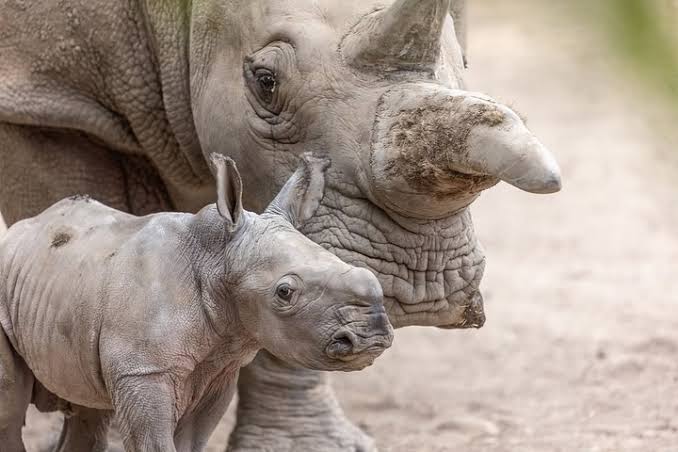
Eesha, the 20‑year‑old mother of Ozzy, is a vital part of Safari West’s rhino program and previously gave birth to Otto in 2023. This is only the second southern white rhino calf ever born at Safari West, the first was Otto, born in April 2023 to the same mother, Eesha. That makes Ozzy especially significant in the preserve’s conservation record. Safari West’s success with just two calves over several years illustrates how careful breeding, veterinary support, and habitat design all come together to foster rare births.
As a mature adult female, she plays a key role in the preserve’s breeding efforts. Experienced mothers like Eesha help researchers and caretakers understand rhino behavior, maternal care, and calf development. Her steady health and successful pregnancies boost confidence in the long‑term strategy to support this near‑threatened species.
3. Born Big
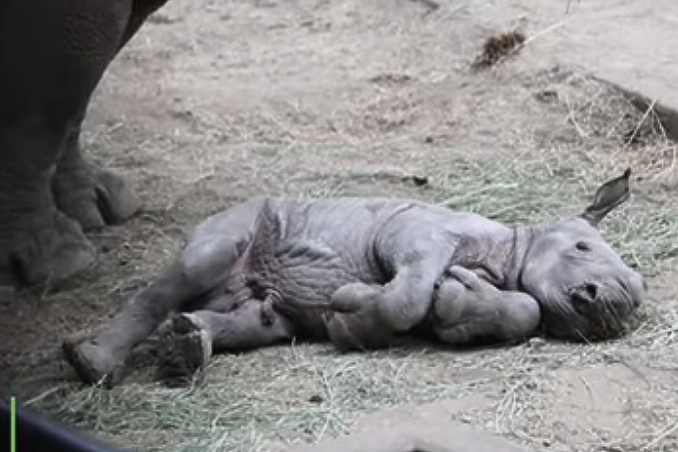
White rhino calves weigh in at around 100 pounds (about 45 kg) at birth, roughly the size of a large babysitter carrying a toddler. Though tiny by adult standards, this is a hefty newborn and their robust build helps ensure a strong start. Calves are born hornless, blind, and dependent, but equipped with strength to nurse and stand within hours. Being born with that size gives calves better survival odds: it helps ward off small predators and enables them to keep pace with the herd. As they feed on their mother’s rich milk, they grow quickly, doubling their weight in just a few months. These early weeks are critical for muscle, immunity, and adapting to grazing practices.
4. Hard-Hit Numbers

Today, there are approximately 17,000 to 18,000 southern white rhinos left in the wild, the only surviving sub‑species of white rhino. Northern white rhinos are essentially extinct in the wild, with only two surviving females under constant protection. After plummeting to fewer than 100 individuals in the early 1900s, southern whites rebounded through intensive conservation. But between 2012 and 2021, unchecked poaching cut their numbers by nearly 24%. While recent monitoring reports a small uptick, 3.4% growth by end of 2023, rhinos remain classified as Near Threatened by the IUCN.
5. Every Birth Counts
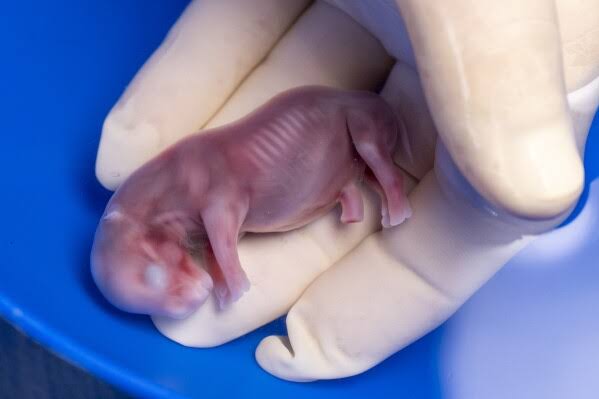
Conservation programs see each new calf as a beacon of hope, especially with northern white rhinos effectively extinct. Those last remaining females cannot breed naturally, so researchers rely on advanced reproductive methods like embryo transfer using southern white rhino surrogates. Breakthroughs in Kenya and Europe have resulted in successful embryo transfers and storage of around 30 northern white rhino embryos. Soon, these could be implanted into southern white rhino moms with the goal of a northern calf, which would be the first born since 2000. This high-tech rescue mission hinges on the continued births of southern whites like Ozzy.
6. Poaching Crisis
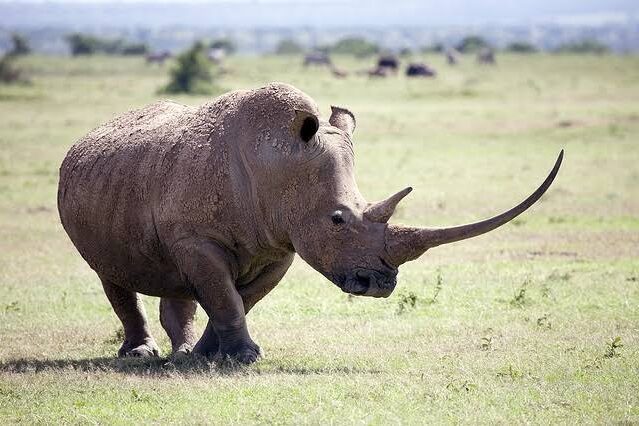
Rhino horns fetch up to $60,000 per kilogram on illegal markets, fueling organized crime, and fueling the killing of approximately 500 rhinos per year in South Africa alone. In 2014, more than 1,200 rhinos were killed in South Africa; while that number dropped to 594 by 2019, poaching remains a deadly threat. Such high poaching pressure reverses decades of recovery. Even with strengthened anti-poaching patrols, drone surveillance, and tougher laws, losses continue. The survival of southern white rhinos, and the hope of reviving northern whites, depends on curbing this illegal trade and protecting rhino habitats.
7. Life Expectancy
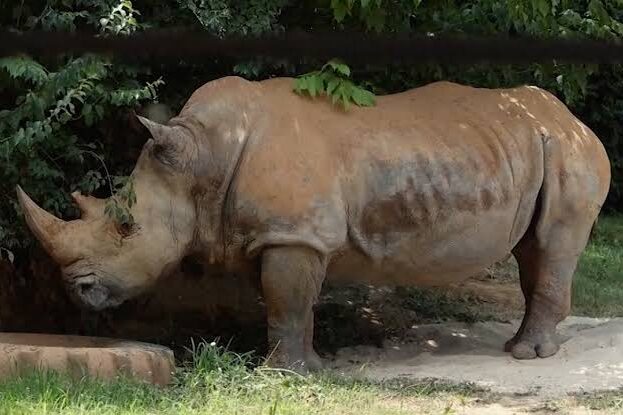
White rhinos in the wild typically live 35–50 years, with captive individuals sometimes reaching their mid-50s. For instance, Dolly, a southern white rhino in Knoxville Zoo, lived to age 56, well beyond the average life span of 36–40 years. Longevity supports conservation because older, experienced females like Eesha (Ozzy’s 20‑year‑old mother) often thrive at breeding and calf-rearing. Their extended lifespans also allow caretakers to monitor generational health and train younger individuals, strengthening the population’s stability over time.
8. Breeding Wins at San Diego
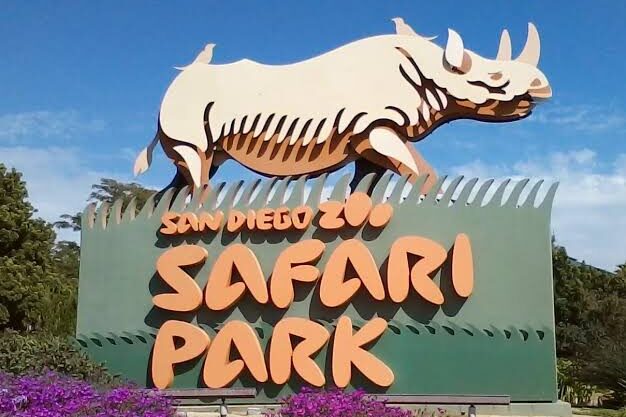
The San Diego Zoo Safari Park has successfully welcomed over 100 southern white rhino calves since opening in 1972, making it a global leader in conservation breeding. These births include natural and artificial insemination methods, with Edward and Future among the most notable for using frozen or hormone-induced semen. These achievements support the broader Northern White Rhino Initiative, which aims to save the nearly extinct northern sub‑species through advanced reproductive technologies. Female southern whites at the Zoo may serve as surrogate mothers for northern rhino embryos, thanks to genome sequencing and cell banking in the Frozen Zoo®. For example, Edward was born via artificial insemination in 2019, marking a significant breakthrough in rhino conservation.
9. Ozzy Inspires Hope

Ozzy’s birth is not just about one calf, it represents the hope that conservation works, and that new life matters in reversing rhino declines. Each healthy calf arriving at Safari West, including Ozzy, adds momentum to broader efforts aimed at saving rhinos globally. From poaching crackdowns in South Africa to scientific breeding programs in zoos, every successful birth offers a tangible piece of progress. Ozzy is a living symbol that human dedication, in every habitat, preserve, and research center, can truly “rock” the future of endangered species.
This story Meet Ozzy: 9 Facts About the White Rhino Calf Named After Ozzy Osbourne was first published on Daily FETCH


